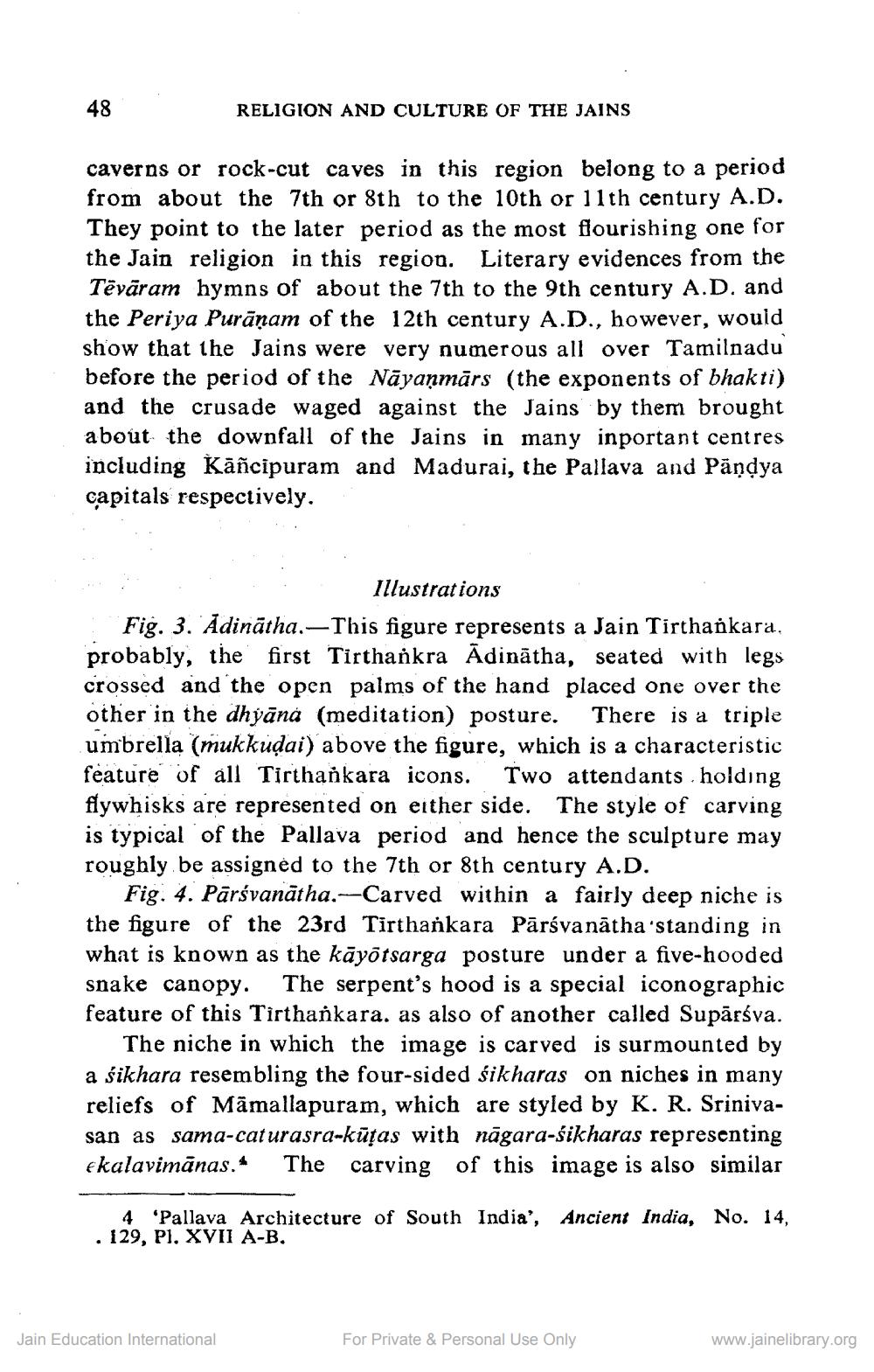________________
48
RELIGION AND CULTURE OF THE JAINS
caverns or rock-cut caves in this region belong to a period from about the 7th or 8th to the 10th or 11th century A.D. They point to the later period as the most flourishing one for the Jain religion in this region. Literary evidences from the Tēvāram hymns of about the 7th to the 9th century A.D. and the Periya Purāņam of the 12th century A.D., however, would show that the Jains were very numerous all over Tamilnadu before the period of the Nāyaṇmārs (the exponents of bhakti) and the crusade waged against the Jains by them brought about the downfall of the Jains in many inportant centres including Kāñcipuram and Madurai, the Pallava and Pandya capitals respectively.
Illustrations Fig. 3. Adinātha.—This figure represents a Jain Tirthankara, probably, the first Tirthaňkra Ādinātha, seated with legs crossed and the open palms of the hand placed one over the other in the dhyāna (meditation) posture. There is a triple umbrella (mukkuļai) above the figure, which is a characteristic feature of all Tirthankara icons. Two attendants holding flywhisks are represented on either side. The style of carving is typical of the Pallava period and hence the sculpture may roughly be assigned to the 7th or 8th century A.D.
Fig. 4. Pārsvanātha.--Carved within a fairly deep niche is the figure of the 23rd Tirthankara Pārsvanātha 'standing in what is known as the kāyôtsarga posture under a five-hooded snake canopy. The serpent's hood is a special iconographic feature of this Tirthankara. as also of another called Supārsva.
The niche in which the image is carved is surmounted by a śikhara resembling the four-sided śikharas on niches in many reliefs of Māmallapuram, which are styled by K. R. Srinivasan as sama-caturasra-kūțas with nāgara-śikharas representing ekalavimānas.* The carving of this image is also similar
4 'Pallava Architecture of South India', Ancient India, No. 14, . 129, Pl. XVII A-B.
Jain Education International
For Private & Personal Use Only
www.jainelibrary.org




